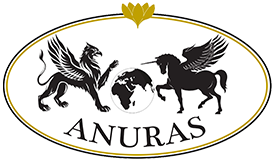Chamomile
General Data
Product Details
About
German Chamomile,
It is a plant of the Compositae family, it is an annual and its height is up to one meter, its leaves are cut green and it is very thin. Its flowers are very small, similar to “Chrysanthemums” or other types of chamomile, which are located in a small circular head, each head has two types of flowers, white flowers that are circular on the outside and slightly inclined and hanging down, and the flowers which are yellowish brown or yellow in the middle of the central circle and are very fragrant and blossom in spring and summer. This plant is native to Europe and is cultivated in other parts of the world, it is planted in most parts of China, Java and Japan, and in Europe and Asia it is grown wildly and planted sometimes, in Iran in some northern regions and it is also seen in the south wildly and is planted in the garden.
Roman Chamomile,
It is a plant of the Compositae family, perennial, short, which is about 20cm tall and very fragrant. The flowers of this complex are in a cap that appears singly at the end of the flowering stem in summer, in each cap the white flowers are around the circle and the yellow flowers are in a circular and prominent part in the middle of the cap. This plant is spread and planted in Europe and Asia. In Iran, it is not grown wild, but it is cultivated.
Yellow Chamomile,
It is a plant of the Compositae family, biennial or perennial, which is somewhat similar in appearance to other chamomiles, and the noticeable difference that distinguishes it from other chamomiles is that the flowers around the head and the flowers in the middle circle of the head both are yellow, while in other chamomiles the flowers around are white. Flowers appear in late spring and summer. This plant is found in rocky, sunny and calcareous soils of different regions of Europe and Asia and in Iran, it grows in abundance in different regions of Iran.
Wild Chamomile,
It is a plant of the Compositae family, annual, small and about 20cm tall. On the head of this flower, there are two types of flowers, one yellow and the other tabular and white. This plant has a weak aroma and its taste is very bitter. It is seen in the northwest and southwest of Iran.
Feverfew plant,
It is a plant of the Compositae family, biennial and perennial. Its stems can grow up to 70cm in height. It is usually planted in gardens because of its beautiful flowers. Its flowers are in a group in a complex head, which is composed of white flowers around the head and in the middle of it in a circle of beautiful golden yellow flowers. This plant is native to Asia Minor and Europe, but it has also been imported to other parts of the world. In Iran, it is grown wildly in the northern regions. The strong aroma of chamomile is inhaled from all its aerial parts.
Chemical Constituents
Matricaria chamomilla
The highest content of β-farnesene (29.8 %), α-farnesene (9.3 %), α-bisabolol and its oxide (15.7 %), chamazulene (6.4 %), germacrene D (6.2 %) and spiroether (5.6 %) is determined. The antioxidant activity was investigated by DPPH assay.
Chamaemelum nobile
Chamazulene (27.80%), β-pinene (7.93%), 1,8- cineole (7.51%), α-pinene (5.94%), α-bisabolol (5.76%) were found major compounds in Chamaemelum nobile.
Anthemis tinctoria
The major constituents are 1,8-cineole (7.9%), β-pinene (7,3%), decanoic acid (5.4%) and α-pinene (4.4%).
Matricaria discoidea
The major constituents are myrcene (28.5%), (E)-β-farnesene (23.4%), germacrene D (6.8%), geranyl isovalerate (6.4%) and (Z)-en-yn-dicycloether (8.1%). The oil yield obtained by hydrodistillation is 0.1% (w/w) on dry weight basis.
Tanacetum parthenium
The main component, in the flowering stage, is camphor (18.94%) and other major components were bornyl acetate (18.35%), camphene (13.74%), bornyl isovalerate (3.15%), borneol (10.93%), juniper camphor (6.23%) and β-eudesmol (2.65%).
Medical disclaimer
Everyone should know their temperament and choose foods which are more appropriate for them. Regular consumption of foods which have the same temperament with a person will cause physical and psychological complications. If you are going to use medicinal herbs continuously and for a long time, be sure to consult your doctor. Rasin IT GmbH does not accept responsibility for the side effects of consuming these products.
The information and reference guides in Anurasfood website are intended solely for the general information for the reader. The contents of this web site are not intended to offer personal medical advice, diagnose health problems or for treatment purposes. It is not a substitute for medical care provided by a licensed and qualified health professional.






Reviews
There are no reviews yet.